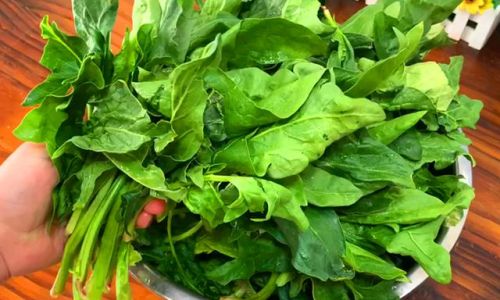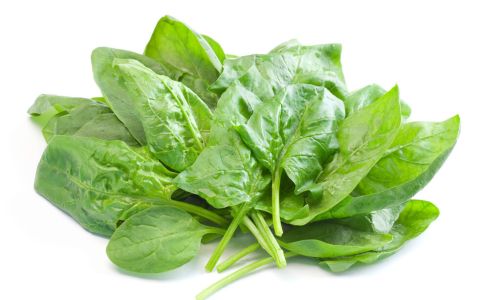Introduction

Spinach, a nutrient-dense leafy green, is a staple in many diets due to its rich content of vitamins, minerals, antioxidants, and dietary fiber. Its versatility makes it a popular choice for salads, smoothies, stir-fries, and various cooked dishes. However, like many fresh vegetables, spinach has a relatively short shelf life, especially when not stored properly. Proper preservation techniques can significantly extend the freshness and nutritional value of spinach, reducing food waste and ensuring that you can enjoy its health benefits for longer. This article delves into various methods for preserving spinach, from simple storage practices at home to more advanced preservation techniques.
Understanding Spinach’s Shelf Life
Before discussing preservation methods, it’s crucial to understand the natural shelf life of spinach. Fresh spinach typically lasts between three to five days in the refrigerator if stored correctly. After this period, spinach may start to wilt, discolor, or develop slimy textures, indicating spoilage. Understanding the factors that affect spinach’s shelf life, such as temperature, humidity, and packaging, is key to effective preservation.
Basic Storage Tips
-
Immediate Refrigeration
Once you bring spinach home from the grocery store, it’s essential to refrigerate it immediately. The cooler temperatures slow down the spoilage process, preserving the freshness and nutritional content. -
Proper Packaging
Spinach should be stored in airtight containers or plastic bags to minimize exposure to oxygen, which accelerates spoilage. Remove any packaging that the spinach came in from the store, as it may not be airtight. If using plastic bags, press out as much air as possible before sealing. -
Moisture Control
Spinach needs a bit of moisture to stay fresh but too much can lead to rot. Paper towels can help absorb excess moisture. Place a few paper towels in the storage container or bag with the spinach before sealing. -
Crisper Drawer
The crisper drawer in your refrigerator is designed for storing fruits and vegetables. It maintains a higher humidity level compared to other parts of the fridge, which is beneficial for leafy greens like spinach.
Advanced Preservation Techniques
While basic storage practices are effective for short-term preservation, if you want to extend the shelf life of spinach even further, consider the following advanced techniques:
-
Freezing Spinach
Freezing is one of the most effective ways to preserve spinach for long-term use. Here’s a step-by-step guide:- Preparation: Wash spinach thoroughly under running water and pat it dry using paper towels or a clean kitchen towel. Remove any stems if desired, as they can become tough when frozen.
- Blanching: Blanching helps retain the color, texture, and nutritional value of spinach during freezing. Bring a large pot of water to a rolling boil. Add a small batch of spinach leaves and cook for about one minute. Immediately transfer the blanched spinach to an ice water bath to stop the cooking process.
- Drying: Once cooled, remove the spinach from the ice water and pat it dry again. Excess moisture can cause freezer burn.
- Freezing: You can freeze spinach in several ways: in airtight containers, freezer bags, or on baking sheets before transferring to bags. If using bags, lay the spinach in a single layer, press out the air, and seal. Label the bags with the date for easy tracking.
- Usage: Frozen spinach can be used in cooked dishes such as soups, stews, casseroles, and baked goods. It’s best to thaw it in the refrigerator overnight or use it directly from frozen in recipes that involve cooking.
-
Dehydrating Spinach
Dehydrating spinach is another excellent method for long-term preservation. Dehydrated spinach retains much of its nutritional value and can be stored for several months.- Preparation: Wash and thoroughly dry the spinach leaves. Remove stems and chop the leaves if desired.
- Dehydrating: Use a food dehydrator set to a temperature between 110°F to 115°F (45°C to 46°C). Spread the spinach leaves in a single layer on the dehydrator trays. Dehydration can take anywhere from 4 to 12 hours, depending on the thickness of the leaves and the humidity levels. The spinach should be brittle and dry when done.
- Storing: Store dehydrated spinach in airtight containers or vacuum-sealed bags in a cool, dark place. It can also be kept in the refrigerator or freezer for even longer storage.
- Usage: Dehydrated spinach can be rehydrated by soaking in water or broth before use. It’s a great addition to soups, stews, smoothies, and baked goods.
-
Canning Spinach
While less common for leafy greens like spinach, canning can be an effective preservation method if done correctly. It involves processing spinach in a hot water bath to create a sterile environment that prevents bacterial growth.- Preparation: Wash and blanch spinach as described in the freezing section. Drain and chop if desired.
- Packing: Pack the spinach into clean, hot canning jars, leaving headspace as specified in your canning recipe. You can add a brine solution (salt and water) or a light syrup to cover the spinach.
- Processing: Process the jars in a boiling water canner for the appropriate time based on jar size and altitude. This typically ranges from 30 to 75 minutes.
- Storing: Once processed, remove the jars from the canner and let them cool. Check for seals and store any unsealed jars in the refrigerator and use promptly. Properly canned spinach can be stored in a cool, dark pantry for up to a year.
Conclusion
Preserving spinach effectively not only reduces food waste but also ensures that you can enjoy its nutritional benefits throughout the year. From simple refrigerator storage to advanced techniques like freezing, dehydrating, and canning, there are multiple methods to choose from based on your needs and preferences. By understanding the factors that affect spinach’s shelf life and implementing proper preservation techniques, you can keep spinach fresh, nutritious, and ready to use in your favorite recipes. Remember, the key to successful preservation is attention to detail, from proper preparation and packaging to storing under optimal conditions. With these methods, you can enjoy the health benefits of spinach long after you’ve bought it.





0 comments